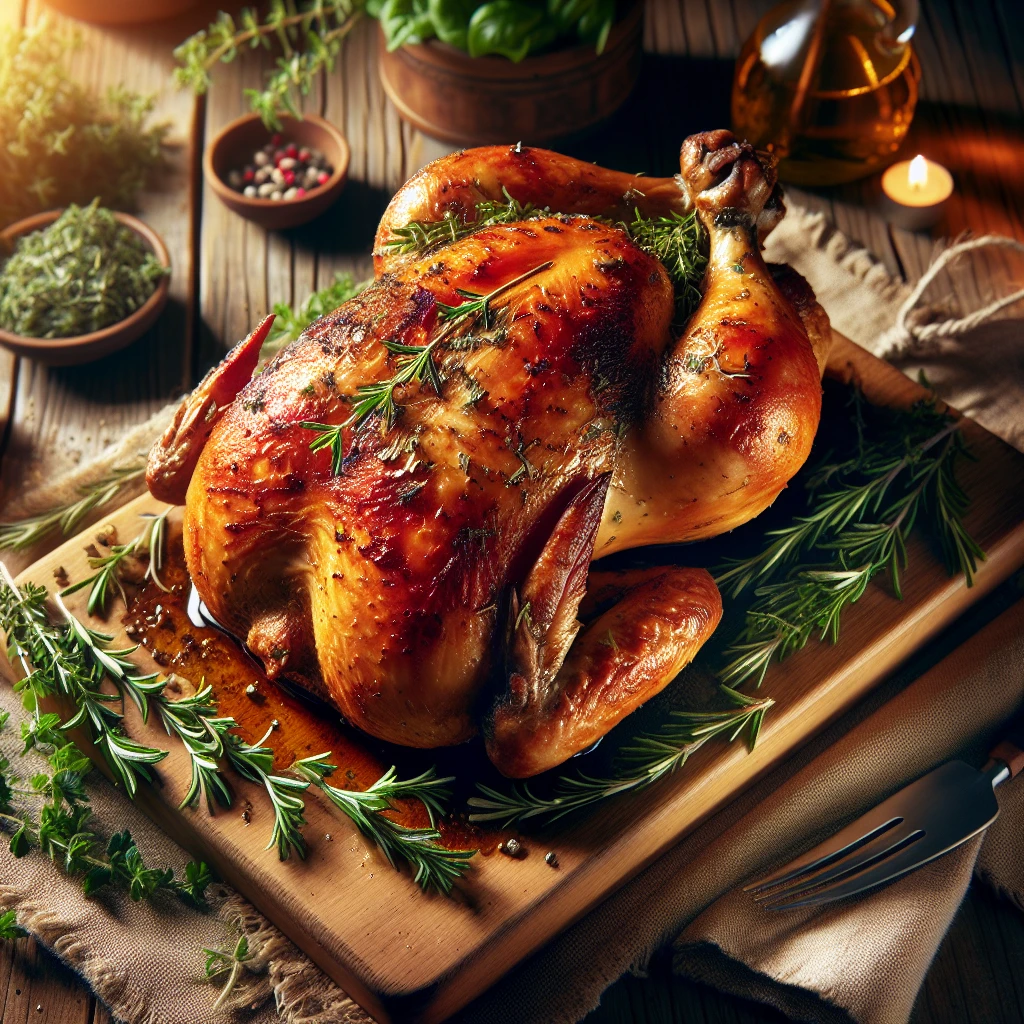
If you're looking for a meal that combines simplicity with unbeatable flavor, this Traditional Rotisserie Chicken is perfect for you. It's a timeless dish that brings out the best in a humble chicken using a blend of spices and the magic of rotisserie cooking.
Chicken: The star of the show; choose a 4-5 pound bird for even cooking and ample servings. Olive oil: Helps the spices adhere and crisps up the skin. Salt and pepper: Essential for seasoning and enhancing the natural flavors. Paprika: Adds a smoky depth and beautiful color. Garlic and onion powder: Infuse the chicken with savory notes. Dried thyme and oregano: Bring an earthy, aromatic touch. Lemon: Freshens the flavor and adds a subtle zest.
This rotisserie chicken pairs beautifully with roasted vegetables or a fresh green salad. For a heartier meal, serve it alongside creamy mashed potatoes or a warm grain like quinoa or couscous. Don't forget to use any leftover chicken for sandwiches or wraps the next day!
First, preheat your rotisserie oven to 350°F. This ensures the chicken starts cooking evenly right away. Meanwhile, rinse the chicken under cold water and pat it dry with paper towels. Dry skin is crucial for achieving that coveted crispy texture.
In a small bowl, mix together the salt, pepper, paprika, garlic powder, onion powder, thyme, and oregano. Rub the chicken all over with olive oil, making sure to get into all the nooks and crannies. This is where the magic happens — sprinkle the spice mixture evenly over the entire chicken, ensuring every inch is coated.
Cut a lemon in half and place one half inside the cavity of the chicken. This will infuse the meat with a subtle citrus aroma as it cooks. Now, secure the chicken onto the rotisserie spit. Make sure it's balanced to avoid any uneven cooking or wobbling.
Insert the spit into your rotisserie oven. Let it cook for about 90 minutes, but it's important to keep an eye on it. The internal temperature should reach 165°F for safe consumption. Once done, allow the chicken to rest for 10 minutes before carving. This helps the juices redistribute, keeping the meat moist and flavorful.